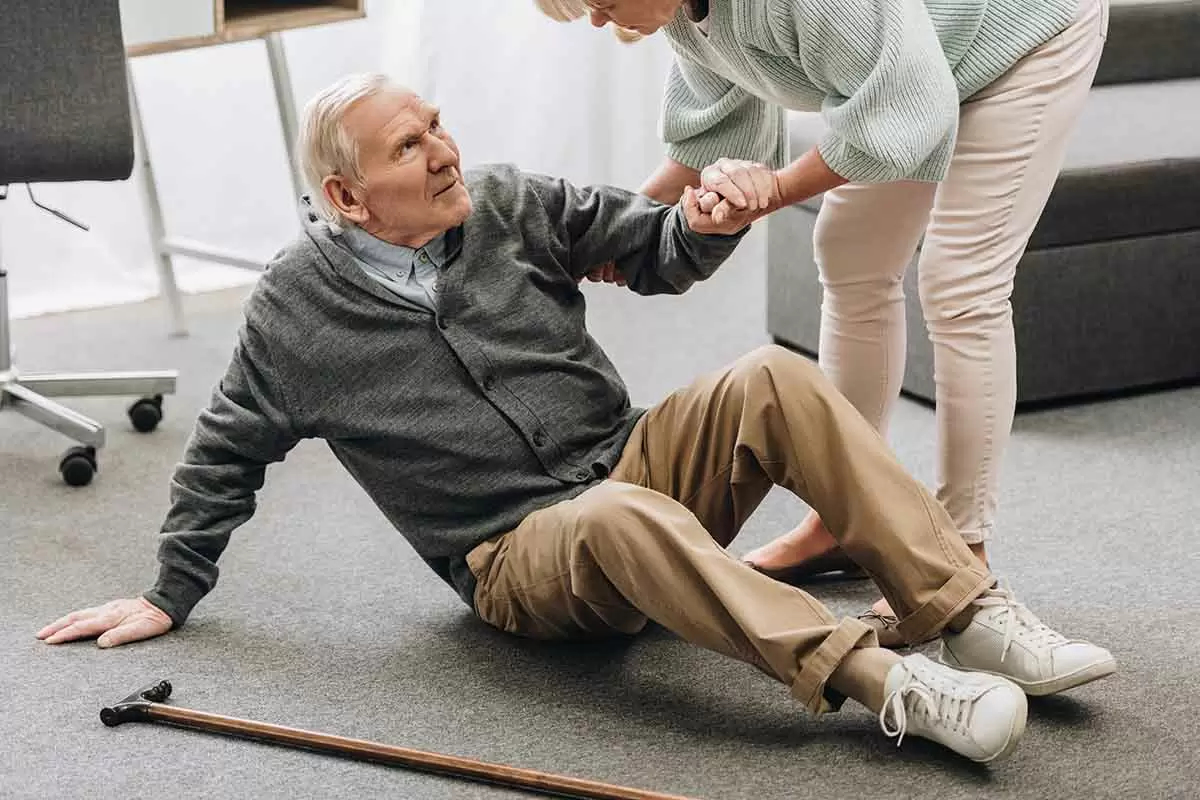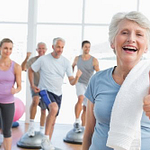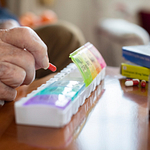Understanding the Risks and Importance of Fall Prevention
As we age, our bodies undergo several changes, some of which can lead to an increased risk of falls. According to the CDC, one out of four seniors falls each year, making it the leading cause of both fatal and non-fatal injuries among the elderly. Therefore, understanding the importance of fall prevention is crucial for ensuring the safety and well-being of our seniors.
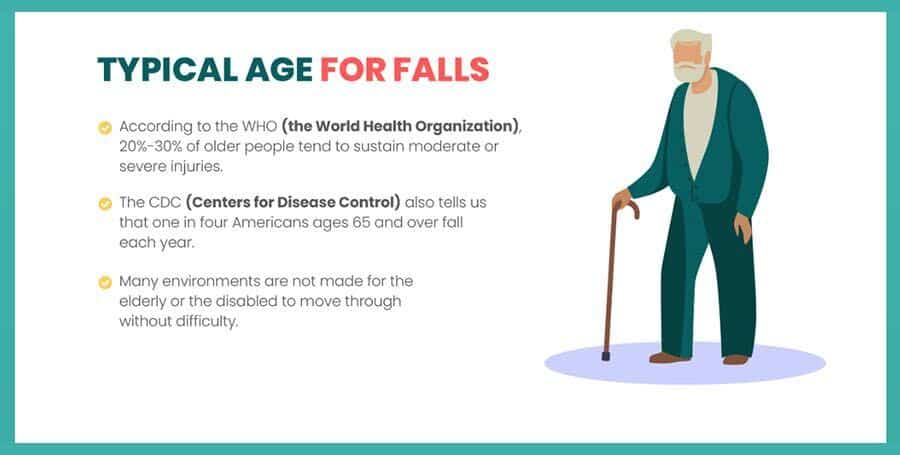
Common Causes and Risk Factors of Falls in Seniors
Several factors contribute to the high incidence of falls among seniors. Some of the most common causes include balance issues, muscle weakness, poor vision, and the side effects of certain medications. Additionally, environmental hazards such as poor lighting, clutter, or uneven surfaces can also increase the risk of falls.
By understanding these risk factors, we can take proactive steps to mitigate them and create safer environments for our seniors. Fall prevention strategies, such as regular exercise, vision check-ups, medication reviews, and home safety assessments, can significantly reduce the risk of falls and their associated injuries.
Remember, fall prevention isn’t just about avoiding accidents—it’s about empowering seniors to live independently and with confidence.
Understanding the Importance of Regular Health Check-ups for Fall Prevention
Regular health evaluations play an instrumental role in preventing falls, especially among the elderly population. According to the Centers for Disease Control and Prevention, one in four older adults falls each year, and frequent health check-ups can significantly decrease this statistic.
The Crucial Role of Vision and Hearing Tests in Fall Prevention
Regular vision and hearing tests are vital components of these check-ups. Research has shown that untreated vision and hearing problems can contribute significantly to instability and subsequent falls, particularly among the elderly.
Medication Reviews: A Necessary Step in Fall Prevention
Regular medication reviews are also essential in fall prevention. Certain medications may cause side effects such as dizziness or confusion, which can increase the risk of falls. Studies suggest that routine medication reviews can help to minimize these risks.
Regular Physical Examinations: Detecting Issues Before They Cause Instability
Last but not least, regular physical examinations can uncover health issues that might cause instability, such as muscle weakness or balance problems. Early detection and management of these issues can dramatically reduce the likelihood of falls.

The Role of Exercise in Fall Prevention
One of the most effective ways to prevent falls is through consistent physical activity. Research from the CDC shows that regular exercise strengthens muscles, increases flexibility, and enhances coordination, reducing the likelihood of a damaging tumble. It’s an invaluable, natural defense against falls.

Benefits of Strength and Balance Exercises
Strength and balance exercises are particularly beneficial. They not only boost physical power but also improve proprioception – the body’s ability to sense its position in space. This dual advantage equips seniors with the necessary stability to navigate their environments safely.
Suggested Physical Activities for Seniors
- Chair squats: An excellent strength exercise that can be modified to fit any fitness level.
- Heel-to-toe walk: Improves balance and coordination, reducing the risk of falls.
- Leg lifts: Strengthens the lower body and enhances balance.
For a comprehensive list of exercises, visit the National Institute on Aging website. Always consult with a healthcare provider before starting a new exercise routine.

Home Safety Measures to Prevent Falls
Preventing falls in the home is critical, particularly for seniors. There are numerous ways to improve home safety and reduce the risk of falls. Here are some key measures that can make a significant difference:
- Remove Fall Hazards and Clutter: It’s essential to keep walkways and living spaces clear of objects that may cause tripping. This includes toys, shoes, and other items. The CDC emphasizes the importance of this simple yet effective step.
- Improve Lighting: Proper lighting is crucial, especially in stairways and hallways. It allows for better visibility and reduces the risk of stumbling on unseen objects.
- Install Non-Slip Flooring: Slippery surfaces can lead to dangerous falls. Consider using non-slip mats in bathrooms and kitchens, and remove loose rugs.
- Use Assistive Devices: Handrails, grab bars, and non-slip treads on stairs can also help prevent falls. They provide extra stability and support, which is particularly important for seniors.
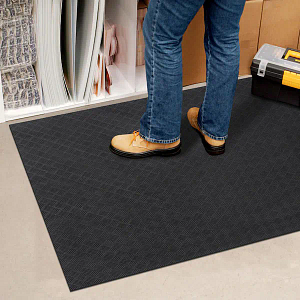

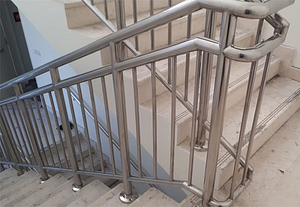
Choosing the Right Footwear
With a significant percentage of senior falls being attributed to improper footwear, it’s critical to make informed choices. The right shoes can provide stability and prevent slips, trips, and falls. According to the CDC, shoes with non-skid soles, low heels, and good arch support are ideal for seniors. Avoid shoes with slick soles or those that don’t fit properly.

Tips on Selecting Shoes and Slippers
- Pick shoes with rubber soles for traction.
- Ensure the shoes fit properly, neither too tight nor too loose.
- Opt for shoes with proper arch support.
- Consider shoes with a Velcro closure for easy wearing and removal.
The Importance of Comfortable Clothing
Comfortable, well-fitting clothes play a significant role in fall prevention. Loose or baggy clothing can catch on objects and cause accidents, while tight clothes may restrict movement. Therefore, seniors should opt for clothing that offers a balance between comfort and fit. This National Institute on Aging guide provides additional practical tips on fall prevention.
Importance of Proper Nutrition and Hydration in Seniors
Proper nutrition and hydration are critical for seniors to prevent falls. Malnutrition and dehydration can lead to muscle weakness, cognitive impairment, and low blood pressure, all of which can contribute to falls.

Suggested Diets and Hydration Habits for Seniors
Seniors are advised to consume a balanced diet rich in lean proteins, fruits, vegetables, and whole grains, and to stay hydrated by drinking plenty of water throughout the day. Specific dietary recommendations can be found on the National Institute on Aging’s website.
The Role of Vitamin D and Calcium in Maintaining Bone Health
Both Vitamin D and calcium play significant roles in maintaining bone health. They work together to protect seniors from osteoporosis, a condition that can increase the risk of falls by making bones more fragile.

Emotional Well-being and Fall Prevention
Emotional well-being plays a pivotal role in fall prevention among seniors, particularly in managing the psychological impacts of the fear of falling. This fear can pose a significant threat to their overall quality of life, leading to a cycle of self-imposed limitation and increased risk of falls. A study by the National Institutes of Health reveals that fear of falling can lead to reduced physical activity, social withdrawal, and increased anxiety.
Strategies to Overcome Fear of Falling
It’s crucial to adopt strategies that encourage seniors to overcome their fear of falling. Regular exercise, cognitive-behavioral therapy, and the use of assistive devices can significantly reduce the fear of falling and improve balance and strength. The Centers for Disease Control and Prevention provides an excellent resource on practical fall prevention strategies.
The Role of Family Support in Fall Prevention
Family support and reassurance are vital elements in fall prevention. A supportive environment can help alleviate the fear of falling and promote confidence in mobility. Open communication, encouragement, and reassurance can help seniors maintain an active lifestyle and improve their emotional well-being. The National Institute on Aging provides insights on how families can support seniors to prevent falls.

When a Fall Happens: Essential Steps to Take
Understanding the proper response to a fall is crucial, as it can significantly influence the outcome of the incident. Statistics from the CDC show that one out of five falls causes severe injury, making immediate action vital.
Getting Up Safely After a Fall
Proper technique when getting up from a fall can prevent further injury. The NHS offers a step-by-step guide on how to stand safely after a fall. Always remember to roll onto your side, push up into a kneeling position, and use sturdy furniture to assist you as you rise.

When to Seek Medical Help
Seek immediate medical attention if pain, dizziness or confusion persists after a fall. Provide all necessary information to healthcare providers, such as how the fall occurred, symptoms experienced, and any pre-existing medical conditions. Mayo Clinic offers comprehensive advice on this.
Preventing Future Falls
Documenting and reporting fall incidents is crucial in preventing future falls. By understanding the circumstances and causes, preventative measures can be implemented. The World Health Organization emphasizes this point in its fall prevention resources.
.
